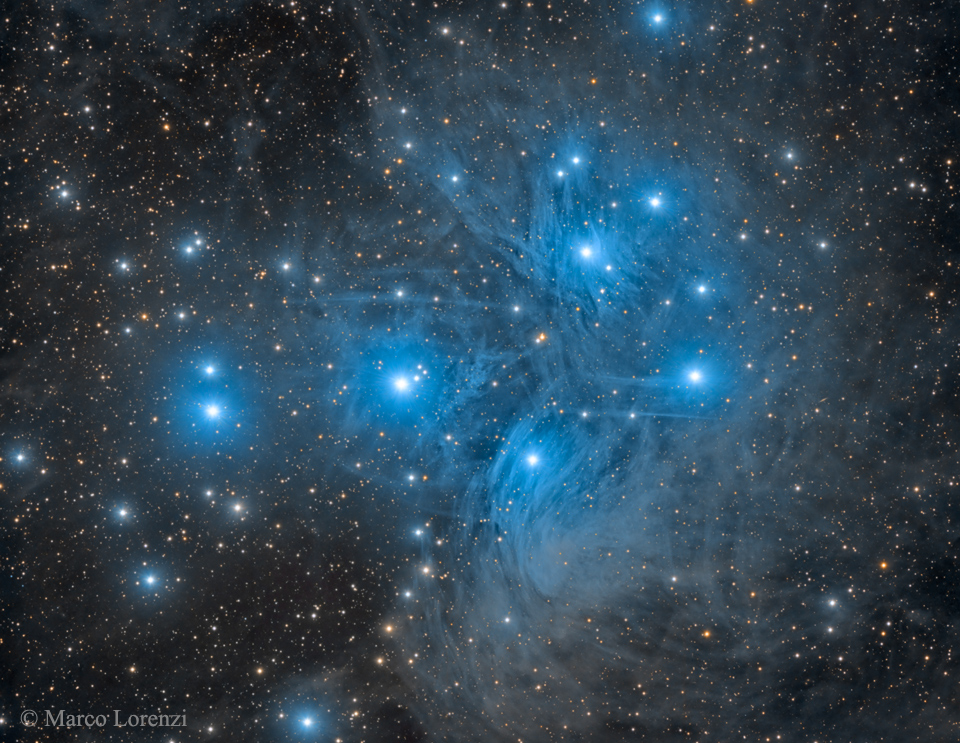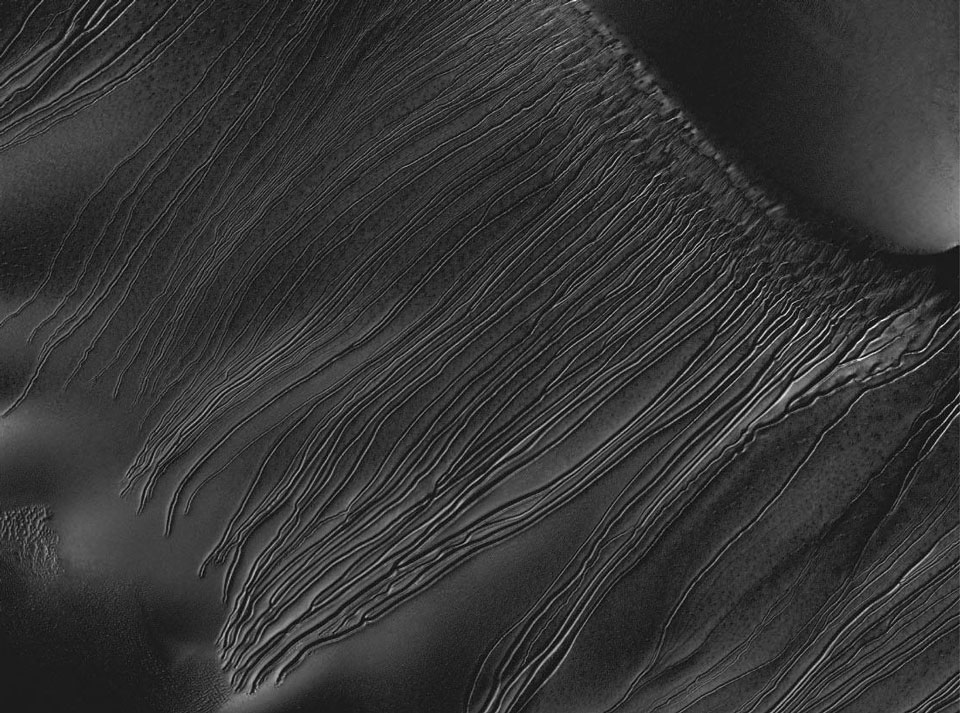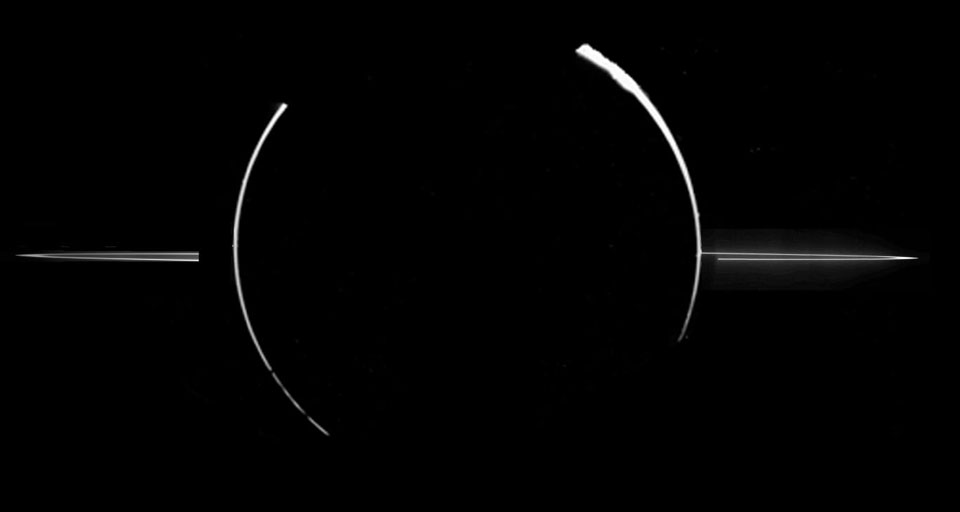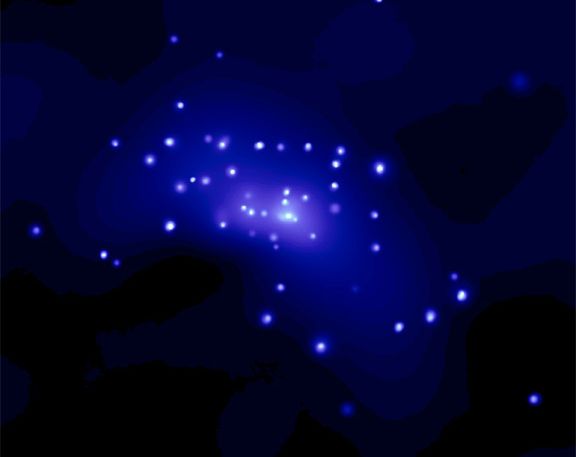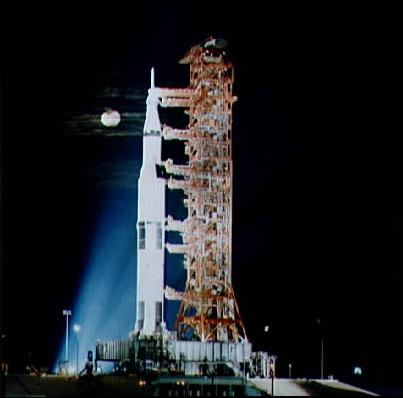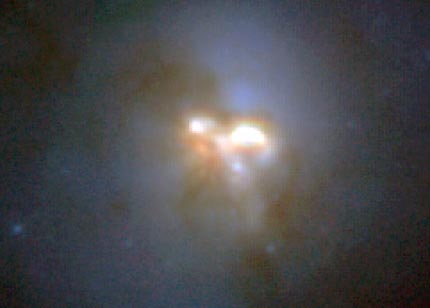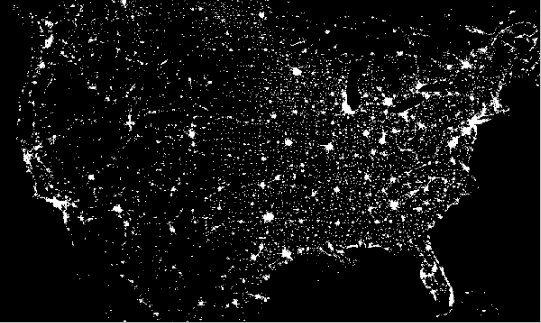| << Previous | Index | Next >> |
2015 Have you ever seen the Pleiades star cluster? Even if you have, you probably have never seen it as dusty as this. Perhaps the most famous star cluster on the sky, the bright stars of the Pleiades can be seen without binoculars from even the depths of a light-polluted city. With a long exposure from a dark location, though, the dust cloud surrounding the Pleiades star cluster becomes very evident. The featured exposure took over 12 hours and covers a sky area several times the size of the full moon. Also known as the Seven Sisters and M45, the Pleiades lies about 400 light years away toward the constellation of the Bull (Taurus). A common legend with a modern twist is that one of the brighter stars faded since the cluster was named, leaving only six stars visible to the unaided eye. The actual number of Pleiades stars visible, however, may be more or less than seven, depending on the darkness of the surrounding sky and the clarity of the observer's eyesight.
2014
Click to play embedded YouTube video.
Image Credit: ESA, NASA, Hubble Space Telescope; Music: The Driving Force (Jingle Punks)
2013 What creates these long and nearly straight grooves on Mars? Dubbed linear gullies, they appear on the sides of some sandy slopes during Martian spring, have nearly constant width, extend for as long as two kilometers, and have raised banks along their sides. Unlike most water flows, they do not appear to have areas of dried debris at the downhill end. A leading hypothesis -- actually being tested here on Earth -- is that these linear gullies are caused by chunks of carbon dioxide ice (dry ice) breaking off and sliding down hills while sublimating into gas, eventually completely evaporating into thin air. If true, these natural dry-ice sleds may well provide future adventurers a smooth ride on cushions of escaping carbon dioxide. The above recently-released image was taken in 2006 by the HiRISE camera on board the NASA's Mars Reconnaissance Orbiter currently orbiting Mars.
2012 Why does Jupiter have rings? Jupiter's rings were discovered in 1979 by the passing Voyager 1 spacecraft, but their origin was a mystery. Data from the Galileo spacecraft that orbited Jupiter from 1995 to 2003 later confirmed that these rings were created by meteoroid impacts on small nearby moons. As a small meteoroid strikes tiny Adrastea, for example, it will bore into the moon, vaporize, and explode dirt and dust off into a Jovian orbit. Pictured above is an eclipse of the Sun by Jupiter, as viewed from Galileo. Small dust particles high in Jupiter's atmosphere, as well as the dust particles that compose the rings, can be seen by reflected sunlight.
2011
[imghover6=http://apod.nasa.gov/apod/image/1106/20 ... hi600h.jpg]http://apod.nasa.gov/apod/image/1106/20 ... hLabel.jpg[/imghover6]Image Credit & Copyright: Babak Tafreshi (TWAN)
2010
[imghover6=http://apod.nasa.gov/apod/image/1006/Co ... ins900.jpg]http://apod.nasa.gov/apod/image/1006/Co ... ins900.jpg[/imghover6]Image Credit & Copyright: Rich Richins
2009 M13 is one of the most prominent and best known globular clusters. Visible with binoculars in the constellation of Hercules, M13 is frequently one of the first objects found by curious sky gazers seeking celestials wonders beyond normal human vision. M13 is a colossal home to over 100,000 stars, spans over 150 light years across, lies over 20,000 light years distant, and is over 12 billion years old. At the 1974 dedication of Arecibo Observatory, a radio message about Earth was sent in the direction of M13. The reason for the low abundance of unusual blue straggler stars in M13 remains unknown.
2008 How did the star Eta Carinae create this unusual nebula? No one knows for sure. About 165 years ago, the southern star Eta Carinae mysteriously became the second brightest star in the night sky. In 20 years, after ejecting more mass than our Sun, Eta Car unexpectedly faded. This outburst appears to have created the Homunculus Nebula, pictured above in a composite image from the Hubble Space Telescope taken last decade. Visible in the above image center is purple-tinted light reflected from the violent star Eta Carinae itself. Surrounding this star are expanding lobes of gas laced with filaments of dark dust. Jets bisect the lobes emanating from the central star. Surrounding these lobes are red-tinted debris captured only by its glow in a narrow band of red light. This debris is expanding most quickly of all, and includes streaming whiskers and bow shocks caused by collisions with previously existing material. Eta Car still undergoes unexpected outbursts, and its high mass and volatility make it a candidate to explode in a spectacular supernova sometime in the next few million years.
2007 If you took a picture of the Sun at the same time each day, would it remain in the same position? The answer is no, and the shape traced out by the Sun over the course of a year is called an analemma. The Sun's apparent shift is caused by the Earth's motion around the Sun when combined with the tilt of the Earth's rotation axis. The Sun will appear at its highest point of the analemma during summer and at its lowest during winter. Analemmas created from different Earth latitudes would appear at least slightly different, as well as analemmas created at a different time each day. The analemma pictured to the left was built up by Sun photographs taken from 1998 August through 1999 August from Ukraine. The foreground picture from the same location was taken during the early evening in 1999 July.
2006 Grab a pair of binoculars and check out Saturn and Mars in the early evening sky tonight! Looking west shortly after sunset, your view could be similar to this one - recorded on June 14. But while this picture shows the two bright planets (Saturn at left) separated by around 1.5 degrees and neatly flanking M44, the Beehive Star Cluster, tonight should find those planets even closer together. In fact, Saturn and Mars are scheduled to achieve their closest alignment near sunset, approaching to within about half a degree. The Beehive will still stand out in the distant starry background. Still got those binoculars in hand? You might as well look for Mercury and Jupiter too.
2005 Portuguese navigator Ferdinand Magellan and his crew had plenty of time to study the southern sky during the first circumnavigation of planet Earth. As a result, two celestial wonders easily visible for southern hemisphere skygazers are known as the Clouds of Magellan. These cosmic clouds are now understood to be dwarf irregular galaxies, satellites of our larger spiral Milky Way Galaxy. The Small Magellanic Cloud pictured above actually spans 15,000 light-years or so and contains several hundred million stars. About 210,000 light-years distant in the constellation Tucana, it is the fourth closest of the Milky Way's known satellite galaxies, after the Canis Major and Sagittarius Dwarf galaxies and the Large Magellanic Cloud. This gorgeous view also includes two foreground globular star clusters NGC 362 (top left) and 47 Tucanae. Spectacular 47 Tucanae is a mere 13,000 light-years away and seen here to the right of the Small Magellanic Cloud.
2004 To the unaided eye, they appeared as similar fuzzy patches. But when a bright comet passed in front of a bright star cluster last month, binoculars and cameras were able to show off their marked differences in dramatic fashion. Pictured above, the bright comet, C/2001 Q4 (NEAT) shows many details of its coma and tail, while far in the distance the Beehive open cluster, M44, shows many of its stars. Comet Q4 has now faded to the edge of unaided visibility and can best be found with a sky map and binoculars from the Northern Hemisphere well into June. Star cluster M44 will remain an impressive star cluster toward the constellation of Cancer indefinitely.
2003 It's the bubble versus the cloud. NGC 7635, the Bubble Nebula, is being pushed out by the stellar wind of massive central star BD+602522. Next door, though, lives a giant molecular cloud, visible above to the lower right. At this place in space, an irresistible force meets an immovable object in an interesting way. The cloud is able to contain the expansion of the bubble gas, but gets blasted by the hot radiation from the bubble's central star. The radiation heats up dense regions of the molecular cloud causing it to glow. The Bubble Nebula, pictured above as a color negative to help bring up contrast, is about 10 light-years across and part of a much larger complex of stars and shells. The Bubble Nebula can be seen with a small telescope towards the constellation of Cassiopeia.
2002 The many bright, point-like sources in this Chandra Observatory x-ray image lie within NGC 4697, an elliptical galaxy some 40 million light-years away towards Virgo. Like other normal elliptical galaxies, NGC 4697 is a spherical ensemble of mainly older, fainter, low mass stars, with little star forming gas and dust compared to spiral galaxies. But the luminous x-ray sources in the Chandra image indicate that NGC 4697 had a wilder youth. Powering the x-ray sources are neutron stars and black holes in binary star systems, where x-rays are generated as matter from a more ordinary companion star falls in to these bizarre, compact objects. Since neutron stars and black holes are the endpoints in the lives of massive stars, NGC 4697 must have had many bright, massive stars in its past. An exceptionally large number of NGC 4697's x-ray binaries are found in the galaxy's globular star clusters, suggesting that dense star clusters are a good place for neutron stars and black holes to capture a companion. Stellar winds and supernovae explosions of massive stars could also have produced the hot gas responsible for this galaxy's diffuse x-ray glow.
2001 Tumultuous clouds of the Carina Nebula, 8000 light-years away, glow in planet Earth's southern sky. Striking and detailed, this close-up of a portion of the famous nebula is a combination of exposures through six different filters taken with the Hubble Space Telescope's Wide Field Planetary Camera 2 in April of 1999. Dramatic dark dust knots and complex features revealed are sculpted by the winds and radiation of Carina's massive and energetic stars. But how were this picture's colors generated? Astronomical images produced from Hubble Space Telescope data can be composed of exposures made using relatively narrow filters which don't match the color responses of the human eye. Some of the filters even transmit wavelengths of light outside the visible spectrum. Exposures made with different narrow filters, as in this case, are translated to a visible color where shorter wavelengths are assigned bluer and longer wavelengths assigned redder colors. This color scheme represents a "chromatically ordered" way of presenting the data rather than a natural color image.
2000 In 1865 Jules Verne predicted the invention of a space capsule that could carry people. In his science fiction story "From the Earth to the Moon", he outlined his vision of a cannon in Florida so powerful that it could shoot a "Projectile-Vehicle" carrying three adventurers to the Moon. Over 100 years later, NASA, guided by Wernher Von Braun's vision, produced the Saturn V rocket. From a spaceport in Florida, this rocket turned Verne's fiction into fact, launching 9 Apollo Lunar missions and allowing 12 astronauts to walk on the Moon. Pictured is the last moon shot, Apollo 17, awaiting a night launch in December of 1972. Spotlights play on the rocket and launch pad while the full Moon looms in the background. Humans have not walked on on the lunar surface since.
1999 Presenting a sleek needle-like profile the magnificent spiral galaxy NGC 4565 is viewed edge-on from planet Earth. Its core of stars bulges from the centre of a thin disk of spiral arms and dust. The core appears to be cut sharply by dust lanes to dramatic effect in this composite image. NGC 4565's obscuring dust lanes and pronounced core are typical of large majestic spiral galaxies, including our own Milky Way. To make this picture, astronomer Bill McLaughlin digitally combined a high quality black and white image with colour information from three separate exposures through red, green, and blue filters. This island universe is about 50 million light-years away in the constellation Coma Berenices.
1998 The Sloan Digital Sky Survey (SDSS) will soon begin. Pictured above is the 2.5-meter telescope poised to create the most ambitious sky map in the history of astronomy. SDSS will catalog one quarter of the sky down past 23rd magnitude ( R), obtaining redshifts for galaxies and quasars brighter than magnitude 19. SDSS is expected to store about 200 Gigabytes of data each night. Astronomers will work to cull from this information an unprecedented three-dimensional view of our local universe. However, the SDSS may one day be remembered not only for the hundreds of millions of objects which it could see, but for how it indicated the nature and composition of the rest of the universe which it could not see.
1997 Arp 220 is the brightest object in the local universe. But why does it shine so brightly? Arp 220 was cataloged as a peculiar galaxy in the 1960s. In the late 1980s, it was discovered to be an ultraluminous infrared galaxy and headed a list compiled from observations with the now-defunct IRAS satellite. New observations with the Hubble Space Telescope are quite revealing. Photos by NICMOS in the infrared taken in April and released just last week now better resolve the two colliding spiral galaxies at the center of Arp 220. A result of this spiral collision are fantastic knots of new star formation visible as the bright spots on the above photograph. Below the "half-moon" shaped knot on the right is a massive disk of dust possibly hiding a dying spiral's central black hole. The bright knot to the left is the center of the other broken spiral galaxy. The galaxy cores are about 1200 light years apart and are orbiting each other.
1996 This is what the United States of America looks like at night! Can you find your favorite US city on this image? Surprisingly, city lights make this task quite possible. The above picture is actually a composite of over 200 images made by satellites orbiting the Earth. Scans were made by the USAF Defense Meteorological Satellite Program (DMSP) Operational Linescan System. The DMSP satellites continue to help in the understanding and prediction of weather phenomena as well as provide key information about population patterns, city light levels, and even rural forest fires.
| << Previous | Index | Next >> |
